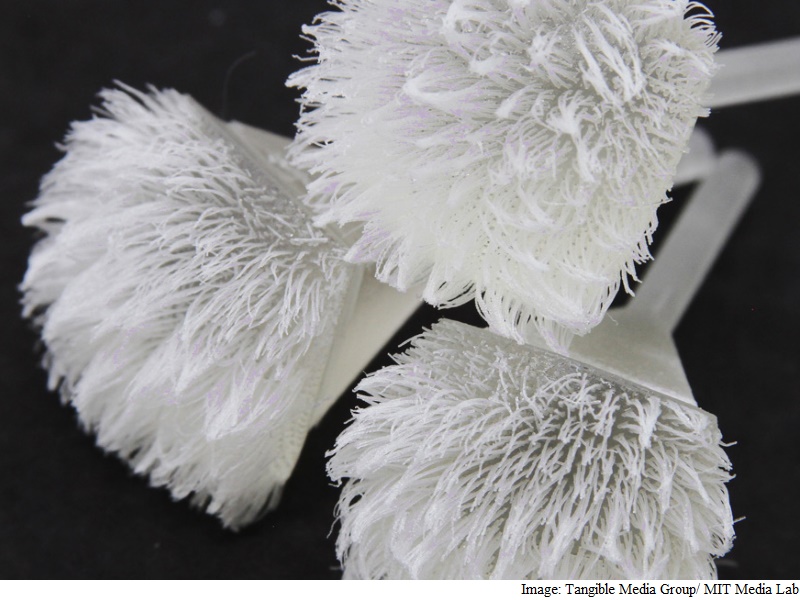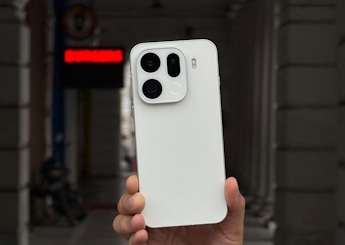New Software Said to Redefine 3D Printing

The 3D printers today can print just about anything, from a full-sized sports car, to edible food, to human skin. But printing hair, fur, and other dense arrays of extremely fine features has been extremely difficult using the technology.
The researchers at the Massachusetts Institute of Technology (MIT) developed the new technique to bypass a major design step in 3D printing.
Instead of using conventional computer-aided design (CAD) software to draw thousands of individual hairs on a computer - a step that would take hours to compute - the team built a new software platform, called "Cilllia", that allows users define the angle, thickness, density, and height of thousands of hairs, in just a few minutes.
Using Cilllia, the researchers designed arrays of hair-like structures with a resolution of 50 microns - about the width of a human hair.
The results were presented recently at the Association for Computing Machinery's 'CHI Conference on Human Factors in Computing Systems' in San Jose, California.
The new technology could be used to print wigs and hair extensions, the researchers said, adding 3D-printed hair could also perform useful tasks such as sensing, adhesion, and actuation.
The work is inspired by hair-like structures in nature, which provide benefits such as warmth, in the case of human hair, and movement, in the case of cilia, which help remove dust from the lungs.
To see whether 3D-printed hair can help actuate, or move objects, the team fabricated a weight-sorting table made from panels of printed hair with specified angles and heights. As a small vibration source shook the panels, the hairs were able to move coins across the table, sorting them based on the coins' weight and the vibration frequency.
"We're just trying to think how can we fully utilise the potential of 3D printing, and create new functional materials whose properties are easily tunable and controllable," said study lead author Jifei Ou.
Get your daily dose of tech news, reviews, and insights, in under 80 characters on Gadgets 360 Turbo. Connect with fellow tech lovers on our Forum. Follow us on X, Facebook, WhatsApp, Threads and Google News for instant updates. Catch all the action on our YouTube channel.
Related Stories
- Samsung Galaxy Unpacked 2025
- ChatGPT
- Redmi Note 14 Pro+
- iPhone 16
- Apple Vision Pro
- Oneplus 12
- OnePlus Nord CE 3 Lite 5G
- iPhone 13
- Xiaomi 14 Pro
- Oppo Find N3
- Tecno Spark Go (2023)
- Realme V30
- Best Phones Under 25000
- Samsung Galaxy S24 Series
- Cryptocurrency
- iQoo 12
- Samsung Galaxy S24 Ultra
- Giottus
- Samsung Galaxy Z Flip 5
- Apple 'Scary Fast'
- Housefull 5
- GoPro Hero 12 Black Review
- Invincible Season 2
- JioGlass
- HD Ready TV
- Laptop Under 50000
- Smartwatch Under 10000
- Latest Mobile Phones
- Compare Phones
- Realme Narzo 90x 5G
- Realme Narzo 90 5G
- Vivo S50 Pro Mini
- Vivo S50
- OPPO Reno 15c
- Redmi Note 15 5G
- Redmi Note 15 Pro 5G
- Redmi Note 15 Pro+ 5G
- Asus ProArt P16
- MacBook Pro 14-inch (M5, 2025)
- OnePlus Pad Go 2
- Poco Pad M1
- Just Corseca Skywatch Pro
- Honor Watch X5
- Acerpure Nitro Z Series 100-inch QLED TV
- Samsung 43 Inch LED Ultra HD (4K) Smart TV (UA43UE81AFULXL)
- Asus ROG Ally
- Nintendo Switch Lite
- Haier 1.6 Ton 5 Star Inverter Split AC (HSU19G-MZAID5BN-INV)
- Haier 1.6 Ton 5 Star Inverter Split AC (HSU19G-MZAIM5BN-INV)

















